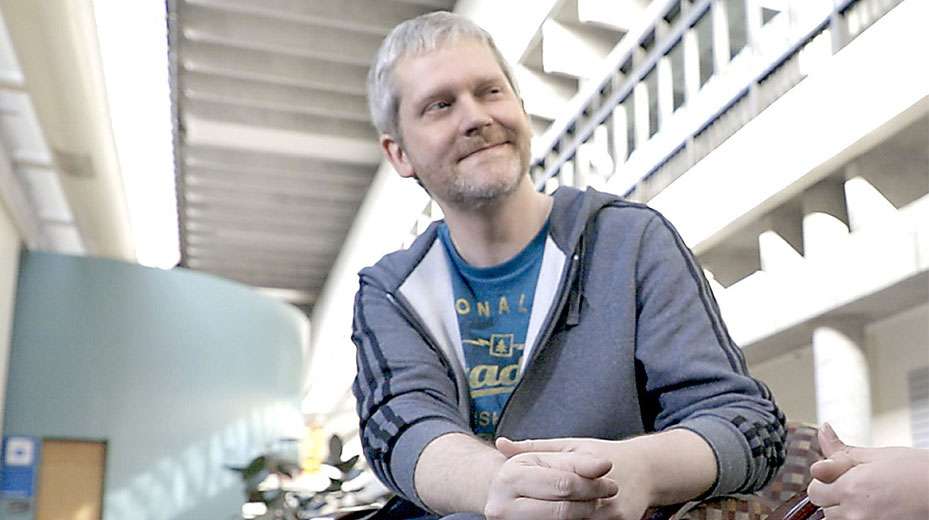•Self worth
• Improved self-discipline
• Able to deal with pressure
• Improved mental focus and memory
• Overcome habits and addictions
• Strengthened immune system
• Become dynamic and more creative
• Emotional well being
Therefore it would make sense to try out Sahaja Yoga Meditation, to bring about a complete and overall balance to you physically, mentally, emotionally and spiritually.
Should you wish to know more about Sahaja Yoga Meditation, please have a look at the links above or you could go directly to “Let’s Meditate” and follow the quick simple step to getting your Self Realisation and inner peace and balance.
Stress Management Through Emotional and Cognitive Control
The thoughtless awareness state experienced during Sahaja meditation manages our thoughts and reactions, and even helps eliminate thoughts that aren’t serving us well. At first, the thoughtless awareness state steadies your attention and directs it inward. This allows you to simply observe your thoughts, feelings and emotions, and with full clarity.
By definition, thoughtless awareness greatly reduces any kind of thought process. However, in practice, thoughts do arise intermittently, separated by bouts of thoughtlessness or stillness of the mind. Thought reduction leaves us with fewer thoughts to deal with. With what’s left of our thoughts, thoughtless awareness influences our cognitive appraisal and interpretation of stressors and increases our confidence in our ability to handle them.
During thoughtless awareness, we can segregate the contents of awareness from awareness itself. We normally experience ourselves as a system of thoughts and feelings. But in thoughtless awareness, we are able to detach from ego and shed the thoughts, feelings and ideas wrapped up in our sense of self.
During Sahaja meditation, the meditator is able to inhibit impulses to move, act or respond. Overall sympathetic nervous system tone is blunted, which produces a sense of equanimity and well-being. Thoughts and feelings rise and fall and are calmly observed without reaction or judgment. This response inhibition or de-linking of action from impulse helps relieve the negative effects of stress, and may ultimately have much deeper implications for healing.
We become “self-possessed;” that is, we have increased control of our faculties, feelings, and behavior. When we believe that we can manage adverse events, we cope more effectively and experience fewer effects of stress. By rebalancing our emotional and cognitive processes, thoughtless awareness reduces our reactivity to stressors — both internal and external — and functions as a “response regulatory mechanism” for our negative thoughts and emotions, which helps us effectively, skillfully respond to challenges, especially in high-stress, high-stakes situations. The result is an inner calm that completely relaxes the mind and body.
The regular practice of meditation increases our awareness of how our thoughts and emotions arise in response to stressors and how we tend to react to them. Enhanced awareness improves our overall vitality and coping skills, reduces negative emotions, and allows us to frame problems in the proper perspective, perceive them realistically, and solve them effectively. In the longer term, the de-linking of action from impulse allows us to recognize and understand our automatic, reflexive, and unconscious thought and behavior patterns.
The process of focusing inward and focusing on the present with a nonreactive, nonjudgmental attitude triggers a shift in perspective, both intellectually and emotionally, allowing us to shed the burdens of negative stress and understand the true nature of our stressors. We can view problems clearly and without attaching negative thoughts or feelings, which improves our self-esteem and self-confidence, which, in turn, leads to making better choices and improved overall cognitive functioning, including our ability to solve problems effectively and manage adverse events. When we sense that we’re not performing at optimum levels, our level of distress is ratcheted up. In increasing overall cognitive performance (e.g., sharper focus, improved problem-solving and decision-making ability), meditation enables us to better cope with stressful events on an ongoing basis.
In time, we begin to generalize and consciously apply healthy, appropriate concepts of delinking in our daily lives.
Many Sahaja researchers believe it is likely that many of the beneficial effects of meditation revolve around the reduction of negative emotion and the increase of positive emotional attitude toward oneself and others (Cahn and Polich, 2006). One way to reach this state is by reducing the emotional significance of negative events during the evaluative stage or appraisal.
One 2014 study of long-term Sahaja practitioners found that the emotional stability of Sahaja meditators is more than a general flattening of the emotional responses to external events; rather it results from the ability to prevent intense, full-scale, potentially harmful, physiological reactions in response to strong adverse conditions.
Emotional events of moderate intensity were able to freely pass appraisal “gates,” whereas highly arousing stimuli heavily activated regulatory mechanisms. Through the practice of Sahaja meditation, the process of appraising an event’s motivational significance undergoes a change which allows us to control emerging emotions, and over time, this change can gradually become automatic. Emotional appraisal transforms into cognitive appraisal, thus allowing more flexible responses to emotional challenges; e.g., our rational, objective problem-solving skills kick in, rather than leaving us at the mercy of emotional overreaction.
(For more, see: Psychological Consequences of Thoughtless Awareness: Automatic Self-Therapy through Attending and Abstaining.)
Dr Sakshi Sharma
Stress is unavoidable in the current scenario, where the entire world is facing the coronavirus pandemic. With the toll of deaths and positive cases of coronavirus on rise, every person in this world is under stress and anxiety. Higher levels of stress adversely affect the physical as well as psychological health of the individuals concerned. Therefore, it becomes highly essential to manage stress at initial stages, so as to avoid severe consequences of high stress on health. The present article focuses on the management of stress through a unique form of meditation, i.e, ‘Sahaja Yoga’. Sahaja Yoga is a scientifically proven technique of meditation which involves the awakening of the dormant primordial energy- the Kundalini, and integrating it with the all-pervading cosmic energy. Regular practice of Sahaja Yoga meditation leads to the inner transformation of an individual, whereby one becomes more moral, integrated, balanced and healthy.
Stress refers both to the circumstances that place physical or psychological demands on an individual and to the emotional reactions experienced in these situations. It leads to severe effects on the physical as well as psychological health of the individuals concerned such as frequent headaches, heart disease, myocardial infarction, cardiovascular disease, musculoskeletal disorders, diabetes, high anxiety, depression, post-traumatic stress disorder and so on. Since, stress is a psychological phenomenon, its management can be best realised by treatment focused at the mental level. Thus, the present article aims at spreading awareness about the stress management technique called ‘Sahaja Yoga’ and highlighting its significance in the improvement of overall health, especially, psychological health.
Sahaja Yoga Meditation
The word ‘Sahaja’ means ‘spontaneous’ and ‘Yoga’ means ‘union with the self’
Sahaja Yoga was founded in 1970 by Mrs. Nirmala Srivastava, more widely known as ‘Shri Mataji Nirmala Devi’. Shri Mataji was spiritually enlightened since birth and granted en-masse realisation to people free of any materialistic consideration. For 40 years since 1970, she travelled tirelessly across the globe to teach Sahaja Yoga meditation world-wide at her own expenses The process of Sahaja Yoga meditation works through the subtle system which comprises of three energy channels (nadis) and seven energy centres (chakras). At the root of this system lies a protective power – Kundalini. Amongst the three channels (Nadis), the left channel called Ida Nadi represents our desires (Ichha shakti); the right channel called Pingla Nadi represents our working ability (Kriya shakti); and the central channel called Sushumna Nadi represents our assent. The seven energy centres in the body correspond to the seven nerve plexuses: the pelvic plexus (Mooladhara Chakra), the aortic plexus (Swadhistana Chakra), the solar plexus
(Nabhi Chakra), the cardiac plexus (Heart Chakra), the cervical plexus (Vishuddhi Chakra), the optic chiasma (Agnya Chakra) and the limbic area of the brain (Sahasrara Chakra). These energy centres are responsible for maintaining their surrounding physical organs in the body.
When Kundalini rises it crosses all the six energy centres and emits from the seventh centre (Sahasrara Chakra) and unites the individual consciousness with universal consciousness. An individual rise above the three channels of the subtle system and reaches a timeless state beyond the past, present and future – a state of thoughtless awareness. This process is referred to as Self-realisation. As an evidence of self-realisation, an individual feels cool breeze of vibrations on the head and palms of hands .
It is imperative to understand how stress arises and how is it managed through Sahaja Yoga meditation. The central channel (Sushumna Nadi) is the path of rising Kundalini and a channel of balance. An individual having too many desires and always thinking about the past deviates from the central channel and puts his left channel under pressure. On the other hand a workaholic person, always working and planning for the future puts his right channel under pressure. The left-sided individuals become highly emotional, conditioned and day dreamers while right-sided people become highly egoistic and harsh on others. Stress is the result of such an imbalance between the two energy channels and deviation from the central channel.
Therefore, one should always keep his attention on the central channel and remain in the balanced state in order to be stress-free. Thus, Sahaja Yoga helps in managing stress effectively by attaining and maintaining the balanced state through regular meditation, since by focussing on the central channel one remains in present rather than thinking about past or future events.
Sahaja Yoga in the present Coronavirus Scenario
As many as 200,000 people across 60 countries have attended online meditation sessions since 16 March 2020 with the commencement of lockdown, according to the information published nation-wide from H.H. Shri Mataji Nirmala Devi Sahaja Yoga Trust (National Trust). The Youtube channel – Pratisthan, Pune of the Trust has seen around 2 million views with 7.31 lakh watch hours and over 13.2 million impressions in the lockdown period. Each viewer attended an average of 8.6 session and spent average of 23 minutes per visit, which is substantial as people look towards meditation to overcome anxiety during COVID19 lockdown.
Conclusion
Sahaja Yoga meditation activates and nourishes the parasympathetic nervous system which relaxes both body functions and the brain by reducing thinking functions Thus, regular meditation everyday cleanses the subtle system, relaxes body and mind, and gradually one starts experiencing physical, mental and emotional benefits also, apart from gaining stress relief Thus, the Indian government should focus on building resilient citizens which can adjust with the pressures of the present stressful scenario.
(The author is Assistant Professor
Govt. SPMR College of Commerce J&K)




